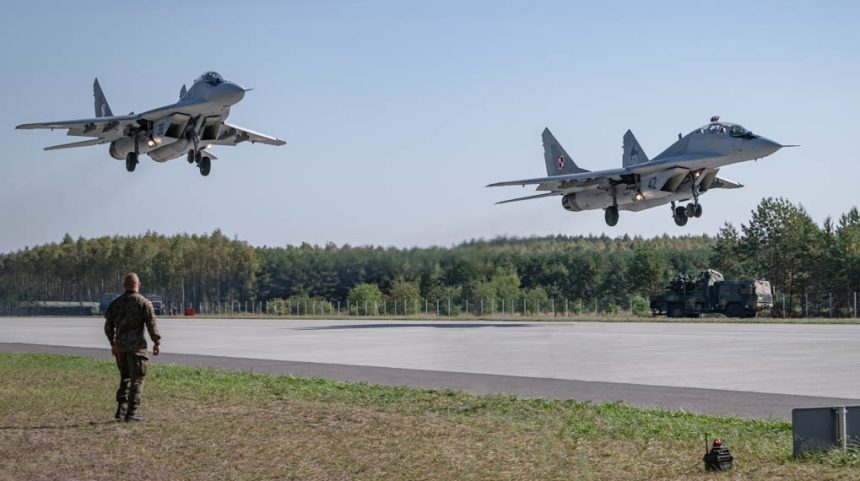We have attended Route 604, the first Polish road strip exercise in two decades.
The road strips in Poland (and elsewhere) went through their glory period in the 1960s and 1980s. The emergence of these stems from the lessons learned from the Six-Day War, when the Israeli Air Force was attacking the Egyptian airbases at the very start of the conflict, destroying a major quantity of aircraft. This was caused by the fact, that the Egyptians treated the principles of scattering the aircraft on the unprotected aprons somewhat reluctantly.
The USSR and its allies were closely following the events in the Middle East. Poland drew relevant conclusions from that conflict and implemented measures that would prevent its own air assets from being destroyed at the beginning of a potential war. The aircraft were protected actively, as they were being properly hidden at the airbases, with special apron designs featuring berms protecting the aircraft, arranged with large separations between the parking spaces.
Another method employed to protect the aircraft was seen in scattering the assets, between reserve airbases and roadstrips. It was assumed that the enemy would be unable to disable all locations at once, and at least some of them would still guarantee that a capacity to conduct air ops would be retained.
The story of road strips in Poland dates back to 1968, when a section of the so-called Berlinka highway, never finished by the Germans, connecting Berlin and the Kaliningrad oblast, was used to conduct take-offs and landings. In the 1970s, apart from the famous Kliniska road strip, another 20 sections of public roads were tailored for use by aircraft.
The Polish road strips, referred to as DOL (Drogowy Odcinek Lotniskowy) were 2,200 meters long, and 12 meters wide, with an extra 3 meters of width on each side. Located in north-western Poland, the road strips were arranged around roads of secondary importance, close to the permanent airbases. However, that also was not a rigid rule.
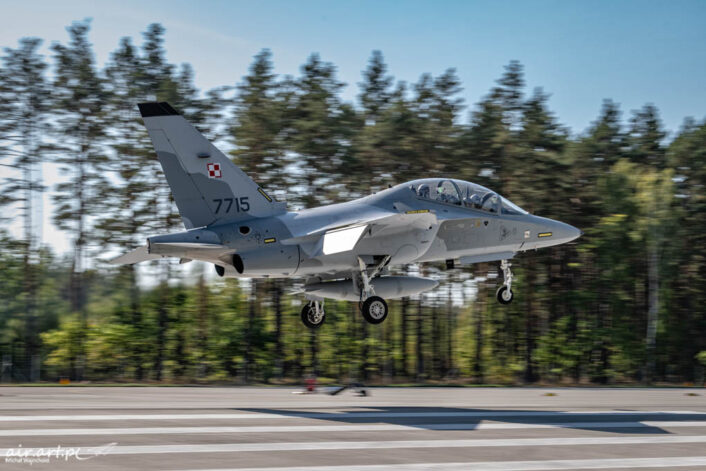
When the roads were modernized, their capacity to withstand the impact of a heavy aircraft was being enhanced, they were being widened, and the hard shoulders were also made wider than standard. The vegetation was being adjusted. Any terrain obstructions or power lines also had to be removed.
If you haven’t seen it yet, take a look at this great clip of two Polish MiG-29s taking off from a road strip during ROUTE 604 exercise, courtesy of @J_Klejszmit
For some background about the ex read here: https://t.co/37XfEEeGIJ pic.twitter.com/8i2yUgcfZk
— The Aviationist (@TheAviationist) September 29, 2023
The methodology adopted in Poland differed quite significantly from the Swedish one, when it came to the infrastructure – in Poland, apart from extra aprons for aircraft at the end of the road strips, no extra shelters, hangars, or storage spaces were arranged. However, matters related to DOLs were kept secret. Nonetheless, when driving a car over a long section of immaculate tarmac, one could easily realize, that in fact, they were driving on a runway. Keeping the road surfaces in an immaculate condition around the DOL runways was assigned to the administrative party, responsible for the given DOL.
DOL Kliniska was the road strip that was used most often, among several others. Most of the Polish road strips were never used and required some preparation before any flight ops. Most often, these steps concerned vegetation, removal of road signs, and marking the alternate routes. In some cases, the preparation required was far more significant and included the demolition of existing buildings, or rearrangement of power lines, or telephone poles. However, the road strip use manual was simple. Just before the DOL strip became active, teams arrived on location securing the logistics, arranging alternate routes, and setting up navaids, lights, and the Krasula take-off command station.
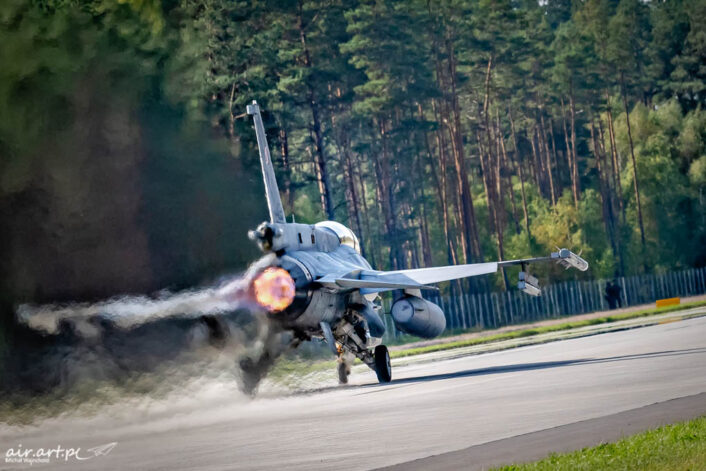
Landing on a road strip was a demanding task for the pilots, and it was usually preceded by many training hours, with operations conducted on designated narrow runway sections or taxiways. Notably, as the road strips were being used, the fighter aircraft also evolved – starting from Lim-1 and Lim-2, and then the air force moved to MiG-21 Fishbed – in this case, landing the jet on a road strip, in a forest, was a much greater challenge, with less room for error. The Polish Air Force operated all of its assets on road strips, including the An-26 airlifters. Foreign participants in DOL exercises were also common – in 1999 the French and the Swedes took part in the exercise organized at DOL Kliniska.
As the political wind of change of the 1990s became apparent, there was no use for maintaining the Polish highway strips, and the economic decline meant that the budget was too tight to keep them alive. So they virtually disappeared. Only a section near Szczecin was still in use, while the remaining DOL strips quickly fell into a technical degradation. As road works progressed, some of the Polish road strips no longer serve their original purpose, and it remains difficult these days to even realize that the given road section was designed to accommodate fighter aircraft.
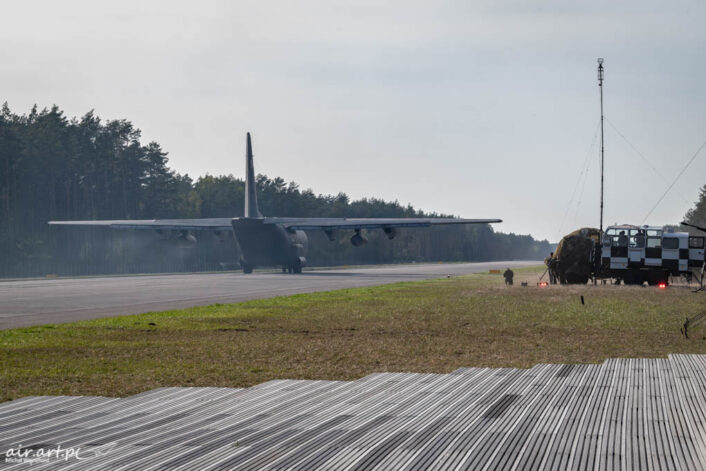
Prior to Route 604 exercise, the last Polish highway strip operations were taking place back in 2003. The idea of scattering the assets under threat is still valid today, as the war in Ukraine shows. This is why the Air Force, in modern days, assumes that roads may be used to deploy detached elements of the Air Force. After 1990 only one new highway strip was created, at the A4 highway between Tarnów and Dębica. However, given the levels of traffic there it seems less than probable that any exercise would take place there, ever.
The matters have been different when it comes to the legacy DOL strip near Wielbark.
View this post on Instagram
When complex renovation works were conducted at the local road between Nidzica and Wielbark, it was decided that an entirely new runway would be built, to replace the existing strip. And that runway is not really similar to any other road strip in Poland, with a concrete surface that is 30 meters wide and 3,000 meters long. These dimensions make it less of a challenge than a standard, narrow road strip (2,200×12 meters). Back in 2018, an exercise took place here, organized by the 1st Tactical Aviation Wing, aimed to check the organizational procedures, but with no landings. The Route 604 exercise was a full test of the Wielbark DOL, with aircraft coming from 1st, 2nd Tactical Air Wings, 3rd Airlift Wing, and 4th Training Aviation Wing all taking place in the exercise.
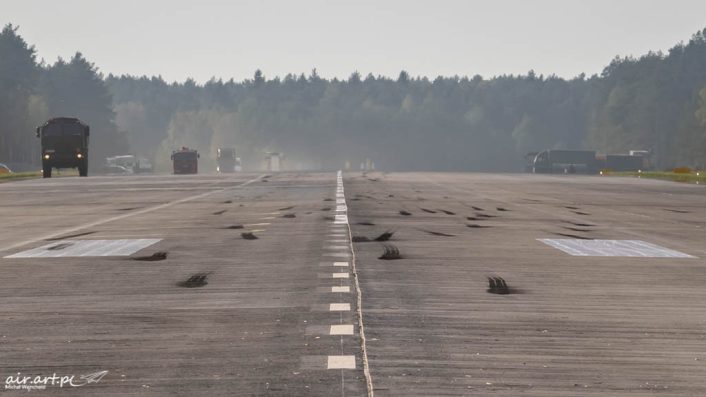
The whole exercise ended with a media day. involving the Head of the Polish MoD, who declared that establishment and modernization of more road strips may be expected in Poland soon – with regular training at them expected as well.
Written with Michał Wajnchold

